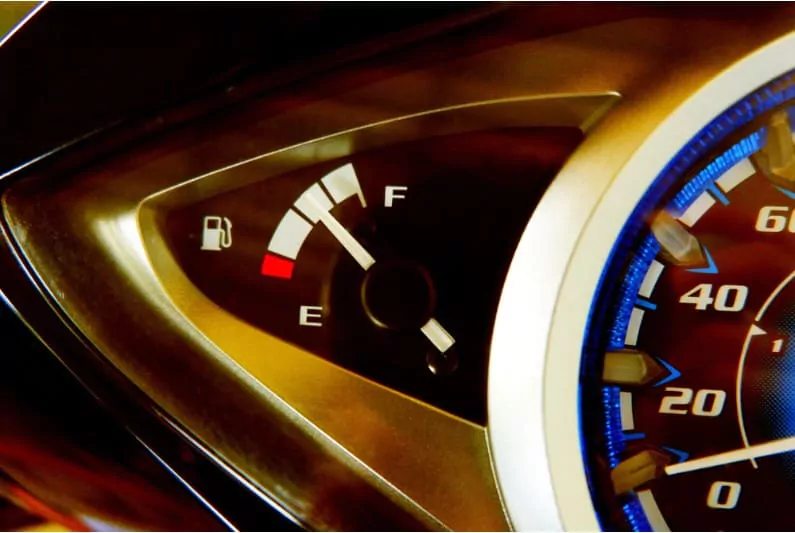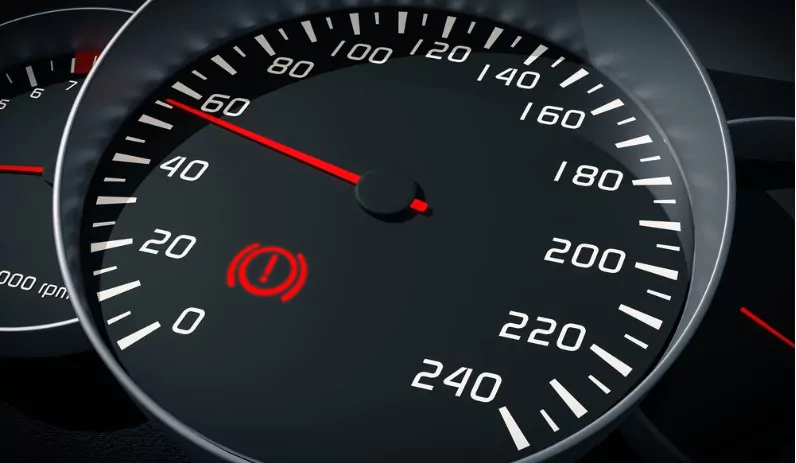How To Increase Bike Mileage? Proven Strategies

In today’s fast-paced world, where environmental consciousness and cost-saving measures are at the forefront of our minds, finding ways to increase bike mileage has become a hot topic among cycling enthusiasts and commuters alike. Whether you’re a passionate cyclist seeking to conquer new distances or simply someone looking to optimise their daily commute, understanding how to increase bike mileage can lead to significant benefits, both for your wallet and the environment.
In this blog, we will delve into the realm of bike efficiency and explore a variety of practical tips and techniques to help you squeeze every last drop of mileage from your two-wheeled companion. We’ll uncover the secrets that can transform your rides, allowing you to go farther, use less energy, and elevate your overall riding experience.
- Basic Understanding of Bike Mileage
- Tips to Increase Bike Mileage
- Optimal Use of Clutch and Brakes
- Gear Shifting Technique
- Proper Maintenance: A Key to Better Mileage
- Riding Techniques: How to Increase Bike Mileage
- Bike Condition and Equipment
- Maintenance Schedule: Keeping Track of Your Bike’s Health
- Adjusting Your Riding Style
- Fuel Quality
- Idle Engine Running
- Correct Riding Posture
- Use of Fuel Additives
- Riding at Optimum Speed
- Limit Rapid Acceleration and Deceleration
- Lighten the Load
- Turn Off the Engine at Long Stops
- Aerodynamics
- Choosing the Right Motorcycle
- Wrapping Up
1 Basic Understanding of Bike Mileage
Mileage, simply put, is the distance your bike can travel per unit of fuel, typically measured in miles per gallon (mpg) or kilometres per litre (kmpl). Bike mileage is influenced by various factors, such as the bike’s engine efficiency, riding conditions, maintenance, and, most importantly, the rider’s behaviour.
So, how to increase bike mileage? This blog will provide you with a plethora of tips and tricks to help you boost your bike’s fuel efficiency.
2 Tips to Increase Bike Mileage
Optimal Use of Clutch and Brakes

Ineffective usage of clutch and brakes is one of the major reasons for poor bike mileage. Frequent and unnecessary use of these components can lead to higher fuel consumption. So:
- Minimise Clutch Usage: Use the clutch sparingly, only when changing gears or when necessary to prevent stalling. Riding with the clutch disengaged increases engine load and fuel consumption.
- Smooth Braking: Sudden braking wastes energy and fuel. Anticipate stops and slow down gradually.
Gear Shifting Technique

Proper gear shifting can also help improve your bike’s mileage. For maximum efficiency:
- Shift up Early: Ideally, shift to a higher gear before the engine reaches its peak power. This reduces the strain on the engine and improves fuel efficiency.
- Shift Down Late: Delay downshifts as long as possible without causing the engine to stutter or knock. This takes advantage of the engine’s existing momentum, reducing the need for additional fuel.
Proper Maintenance: A Key to Better Mileage
Regular Servicing: Regular servicing plays a vital role in ensuring the motorcycle’s performance and, consequently, its fuel efficiency. This includes changing engine oil, cleaning the air filter, and keeping the bike parts properly lubricated. Regular servicing ensures that the bike engine runs smoothly, leading to better fuel combustion and higher mileage.
Tyre Pressure: Always maintain the recommended tyre pressure. Under-inflated tyres have more rolling resistance, making the engine work harder and burn more fuel. Over-inflated tyres, while reducing rolling resistance, can adversely affect bike handling and rider safety.
Clean Spark Plug: A spark plug in good condition contributes significantly to engine performance and fuel efficiency. A dirty spark plug may cause misfiring, resulting in increased fuel consumption.
Air Filter: A clogged air filter restricts airflow to the engine, causing it to work harder and consume more fuel. Regularly cleaning or replacing the air filter can significantly improve fuel efficiency.
Riding Techniques: How to Increase Bike Mileage
- Ride at Optimal Speed: The simplest trick to increase bike mileage is to ride at a steady, moderate speed. While the optimum speed for best mileage may vary based on the bike model, a good rule of thumb is to stay between 40 and 60 km/h. High-speed riding creates more wind resistance, forcing the engine to work harder and consume more fuel.
- Smooth Acceleration and Deceleration: Smooth, gradual acceleration and deceleration help increase bike mileage. Rapid acceleration and hard braking waste fuel. In addition, when you brake hard, the energy that could have been converted back into the engine is lost as heat.
- Use Clutch Wisely: The clutch is an essential component that should be used judiciously. Unnecessary use of the clutch in traffic or holding it while cruising can lead to higher fuel consumption.
- Gear Shifting: Proper gear shifting is also a factor in increasing bike mileage. It’s best to shift up at a relatively low rpm (before the engine starts to struggle) and shift down when you need more power to accelerate.
Bike Condition and Equipment
- Weight: The more weight a bike carries, the more fuel it uses. Try to reduce unnecessary weight as much as possible. Removing unused accessories, carriers, and panniers can make a noticeable difference in your bike’s fuel economy.
- Aerodynamics: Improving your bike’s aerodynamics can help to increase bike mileage. Wind resistance increases with speed and can dramatically affect fuel economy. Choose streamlined helmets and clothing, tuck them in when riding at high speed, and consider an aerodynamic fairing if it’s appropriate for your bike.
- Quality of Fuel: The quality of fuel has a direct impact on bike mileage. Higher quality fuel burns more efficiently, giving better mileage and performance. While high-quality fuel may cost more per litre, the increase in fuel efficiency can offset the additional expense.
Maintenance Schedule: Keeping Track of Your Bike’s Health
- Regular Inspection: Carry out regular inspections of your bike, especially if it has been idle for a long period. Check the tyre pressure, brakes, lights, oil levels, and battery. Regular inspection can help spot issues early before they start affecting your mileage.
- Timely Replacements: Parts like air filters, spark plugs, and oil need to be replaced at regular intervals. A dirty air filter or a worn-out spark plug can reduce your bike’s performance and fuel efficiency. Always adhere to the manufacturer’s guidelines on when to replace these parts.
- Chain Maintenance: A poorly maintained chain can increase fuel consumption by making the engine work harder. Clean and lubricate the chain regularly and ensure it’s correctly adjusted.
Adjusting Your Riding Style
- Anticipate Traffic: Anticipating traffic conditions can help increase bike mileage. By looking ahead and anticipating traffic lights or traffic flow, you can avoid unnecessary braking and acceleration, leading to improved fuel efficiency.
- Avoid Idling: Idling consumes fuel without covering any distance, thus reducing overall mileage. If you’re waiting for more than a minute, it’s better to turn off the engine.
- Riding in Economy Mode: Some modern bikes come with an ‘economy’ mode, which adjusts the bike’s performance to increase fuel efficiency. If your bike has this feature, make use of it when you’re not in a hurry.
Fuel Quality
The quality of the fuel you use plays a significant role in determining the mileage of your bike. High-quality fuel burns efficiently, providing maximum energy and reducing waste. Avoid low-quality fuels, as they can leave residues that impair the engine’s performance.
Idle Engine Running
Do not let your engine idle for a long time. While warming up the engine before a ride is a good practice, doing it excessively can lead to fuel wastage.
Correct Riding Posture

The rider’s posture can affect the bike’s fuel consumption. Sitting upright and reducing wind resistance can help improve mileage. Tuck your elbows in and keep your feet on the foot pegs. Avoid riding with your feet dragging on the ground, as this can cause resistance and increase fuel consumption.
Use of Fuel Additives
Some fuel additives can help clean your bike’s fuel system, enhancing performance and improving mileage. However, their usage should be minimal and under professional guidance, as incorrect or excessive use can potentially damage the engine.
Riding at Optimum Speed

How to increase bike mileage is largely about maintaining the right speed. Every bike has an optimum speed range, usually around 50-60 km/h, at which it delivers the best mileage. Maintaining this speed ensures optimal fuel combustion and minimises wastage.
Limit Rapid Acceleration and Deceleration
Rapid acceleration and deceleration put more load on the engine, leading to increased fuel consumption. Accelerate gradually from a stop, and when you have to slow down, do it steadily.
Lighten the Load
A heavier load puts more strain on the engine, causing it to burn more fuel. So, keep your bike’s weight as low as possible. Avoid carrying unnecessary items, and if you’re using saddlebags, make sure they’re lightweight and aerodynamic.
Turn Off the Engine at Long Stops
If you’re stuck in traffic or waiting for someone and you expect the stop to last for more than a minute, it’s more fuel-efficient to turn off the engine.
Aerodynamics
Aerodynamics play a crucial role in bike mileage. The more aerodynamic your bike is, the less resistance it faces from the wind, leading to lesser fuel consumption. If possible, opt for a bike design that’s streamlined and avoid adding bulky accessories that could increase wind resistance.
Choosing the Right Motorcycle
While the above tips can help any bike achieve better mileage, it’s also important to choose the right bike for your needs. A high-performance sports bike will typically consume more fuel than a commuter bike with a smaller engine. When buying a bike, consider your needs and priorities. If fuel efficiency is a major concern, opt for a bike that’s known for good mileage.
3 Wrapping Up
Learning how to increase bike mileage is not only beneficial for your pocket but also good for the environment. By implementing these simple yet effective tips and techniques, you can maximise your bike’s fuel efficiency. Remember, increasing your bike’s mileage is a combination of maintaining your bike well, adopting a fuel-efficient riding style, and choosing the right motorcycle and equipment. So, the next time you hit the road, keep these pointers in mind to enjoy a longer ride with fewer fuel stops!
Community Q&A
About This Article
This article has been viewed 658 times.



